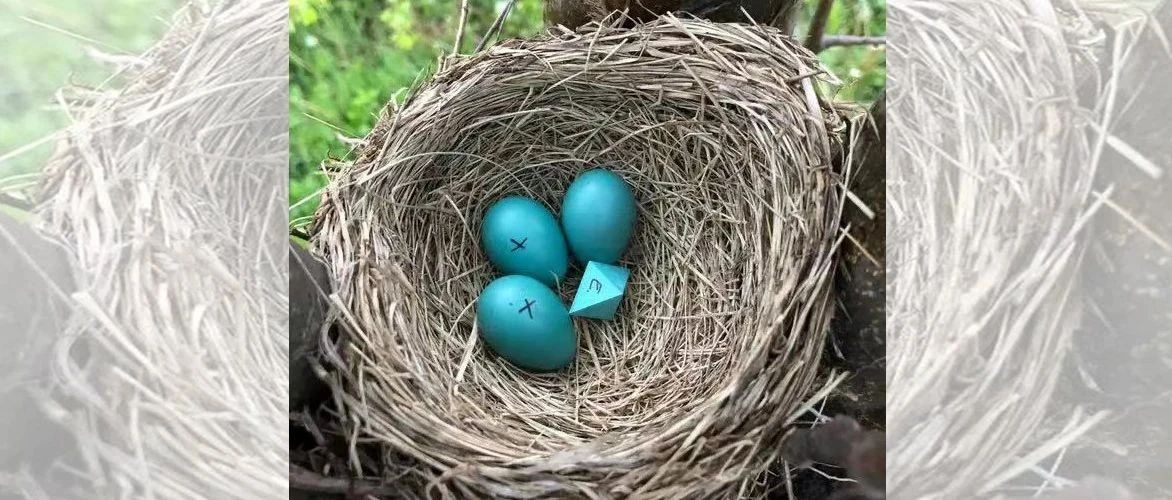
Human bewilderment behavior: why throw an octahedron in a bird's nest?
The number of strange eggs has increased!
in a forest farm in Urbana, USA, a thrush encounters the biggest puzzle of its bird birth.
the bird's nest in front of me is my familiar home, in which lies the babies who have not yet broken their shells. However, right next to the familiar eggs, an unidentified object stands out-its color mimics the real travel thrush eggs, but the angular octahedron shape has nothing to do with the eggs. If the bird is familiar with the human game, it may exclaim: which unfortunate person threw 8 dice in my nest?
(strange eggs have increased | Mark E. Hauber et al.)
Yes, biologists are doing strange experiments again.
how do birds distinguish eggs?
many birds, including thrushes, clean their nests and throw out all kinds of "foreign bodies" that appear in their nests. These "foreign bodies" include not only fallen leaves and broken eggshells, but also eggs from other species. For example, another kind of bird, the brown-headed cowbird (Molothrus ater), often lays eggs secretly in the brigade thrush's nest, expecting the latter to raise a baby for itself. this phenomenon is called "nest parasitism".
(a male thrush Turdus migratorius, which is a common bird in North America | Wikipedia)
throwing away foreign bodies is undoubtedly beneficial: it can not only maintain one's hygiene but also avoid being worked by other birds. However, these cleanups must be carried out on the premise of a correct distinction between birds' eggs-if you get it wrong, won't you accidentally throw your eggs out of the nest?
so, by what criteria do birds judge what are their eggs? This is the question that biologist Mark Hooper (Mark Hauber) and his colleagues want to answer.
Dreaming to be the Cinderella on the high quality yet low price wedding dresses for short curvy brides? Pefect for formal affairs or an informal ceremonies.
to find the answer to this question, the researchers designed two series of fake egg models. They changed in different variables: one group became thinner and longer while keeping the length constant, while the other group gradually "angled" and eventually became a sharp octahedron. The researchers used a 3D printing mechanism to make these strange "bird eggs" and painted them in bright blue with the same style of travel thrush eggs.
(two groups of gradually distorted egg models | Mark E. Hauber et al.)
next, it's time for field testing. The researchers found some travel thrush nests in the forest farm, slipped them into the models while the birds were off guard, and then secretly watched how the nest owner would react.
confused polyhedron
as expected, it is found that when the fake egg model becomes less and less like a real egg, the probability of being rejected by the thrush will increase.
however, there are surprises in the results. In people's opinion, angular "polyhedral fake eggs" are more different from real eggs, but birds are less good at distinguishing them. Compared with the "skinny fake egg", the birds were more hesitant about the "polyhedral fake egg", and the fake egg model was more likely to be retained in the bird's nest.
(the slender version of the fake egg model is more easily recognized by birds. Mark E. Hauber et al.)
this may be because the width is a practical criterion for identifying bird eggs, but it is useless to identify "edges and corners", so the latter is not subject to natural selection. After all, there are many "thin" or "short and fat" eggs in nature, but no kind of egg will grow into a polyhedron.
but at least indecision allows thrushes to avoid a more deadly mistake-they have never accidentally thrown their eggs.